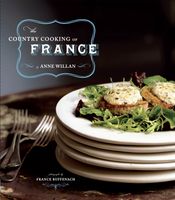Advertisement
Soups
By Anne Willan
Published 2007

Until I went to France, I never realized the possibilities of soup. In the British climate where I was raised, “soup” means a warming first course but not much more. In France, la soupe is fundamental. The word is linked to souper (supper), and you will still find some country households that end almost every day with a big bowl of broth and vegetables fortified with bacon or cheese, along with quantities of bread. The umbrella term in French for what we call soup is potage, meaning “cooked in a pot.” Soupe itself implies the presence of bread, whether baked or fried as croûtes or sliced baguette for dipping. Gratinée Lyonnaise, the onion soup that is almost a symbol of France, is a typical example. Purée means the soup has been sieved or worked through a food mill (the modern food processor is by no means universal in French kitchens, and does not remove chewy fiber in any case). Soupe de Poissons Provençale is a combination of the two, first puréed and then served with croûtes, grated cheese, and a zippy chili mayonnaise. A crème is a richer, smoother edition of a purée containing cream or milk.

